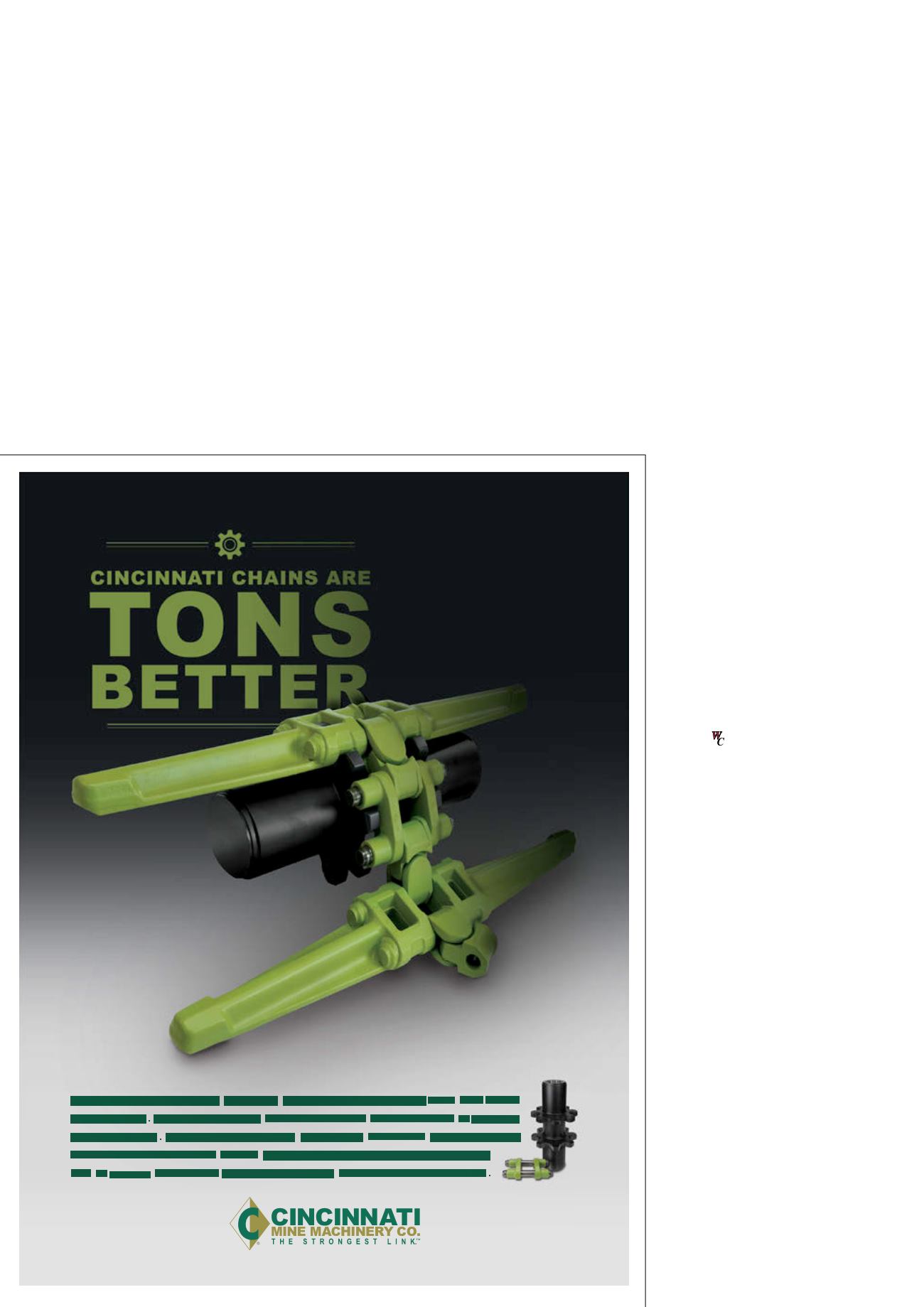
The ice made at the surface drops
down the shaft to the underground
water dam. It cools the water below
10˚C, which is then circulated from the
dam to the underground working spots.
Mud is settled out of the water at the
lowest part of the mine.
Warmwater is recirculated to the ice
water dam, where it is re-chilled with
new ice and recirculated again. Excess
water is pumped up to be cleaned,
re-chilled and re-frozen at the surface.
Note that in this project, the ice was
not pumped beyond the cold sink.
However if required, a 0˚C blend of ice
and water can be mixed in a ‘blender’,
with a 20/80% ice-to-water ratio and
be pumped further-away to the
working places.
Reviving the ice cooling
concept for mines
Ice applications have remained marginal
in the mines until recently. They were
solely used in ultra-deep mines, such as
the 4 km deepM’poneng gold mine, the
world’s deepest mine. In fact, until
recently, the construction of such large ice
plants was raising acute technical issues.
Now, they are much more easy to install
and operate in a fully automated way.
Large ice plants are nowmade up of
several smaller identical and
independent modular ice plants. Each
plant has a capacity of approximately
220 short tpd (1.2 MW). The plants are
self-contained in ISO containers. They
are weather-proof; no building is
required. Thanks to standardisation and
downsizing, the times of erecting and
commissioning large-scale ice plants are
dramatically shortened. A220 short t
plant can be commissioned at site in just
two weeks. Likewise, each plant can
easily be relocated to another location at
the end of the project. More plants can
be added as of need to progressively
build up a larger ice plant that has
several megawatts.
The plants operate 24/7 with minimal
maintenance. The modern ice plants are
optimised to run with high
evaporating temperatures
that warrant high coefficient
of performance (COP). Each
unit of electrical energy
consumed generates three
times more cooling energy.
As a result, surface ice
plants are becoming cheaper
to build and operate, while
water pumping is becoming
more expensive. These
technical improvements now
make the ice cooling systems
economical from level 33
(approximately 1000 m
depth).
Notes
1. Water mass flow: the
calculation of the required
water mass flow, Mw is
determined by a simple
equation: Mw = Q/Cw x ∆t.
Where ∆t is the temperature
difference between
supplied and return water
temperatures. The required
flow Mw is (15 x 10
6
)/4187
x (25 – 13). Mw = 299 l/sec.
2. Ice mass flow : with ice, the
equation accounts for the
latent heat of fusion of the ice
and becomes Mi = Q/ (Li +
Cw x ∆t,). When accounting
for the heat loss of
20 j/kg/1000 m (, Mi = Q/
(Li-20 + Cw x ∆t,). The calcu-
lated flow of ice is (15 x 10
6
)/
(313 500 + 4187 x 25). Mi =
36 kg/sec.
3. Power requirement (ice): Pi
= 129 x 2000/367 x 0.75. =
940 kWe
4. Power requirement (water):
Pw = 1076 x 2000/367 x 0.75.
= 7 820 kWe
Contact us at 1•513•728•4040 or visit cinmine.com to learn more about Cincinnati Mine Machinery products.
Cincinnati Dual Sprocket Conveyor Chains are proven to be better than other
mining chains. Tons better, in fact. Tests confirm our chains deliver
20
percent
mo re s t re n g t h . T h e re s u l t i s g re a t e r d u r a b i l i t y, maximum availability and a
trouble-free service life. That’s how we deliver the lowest cost per ton.
F o r
90
y e a r s , C i n c i n n a t i h a s p ro v e n t o b e
T H E S T RONG E S T L I NK .


